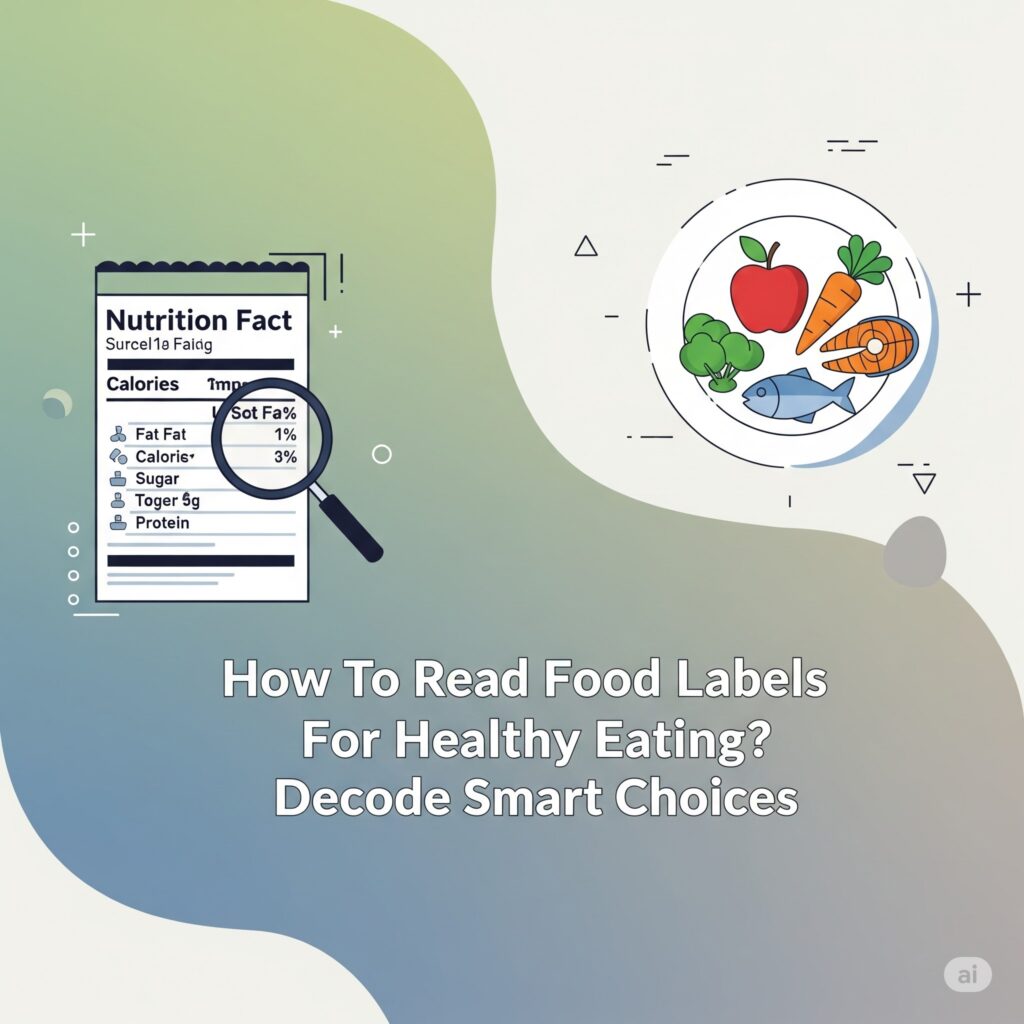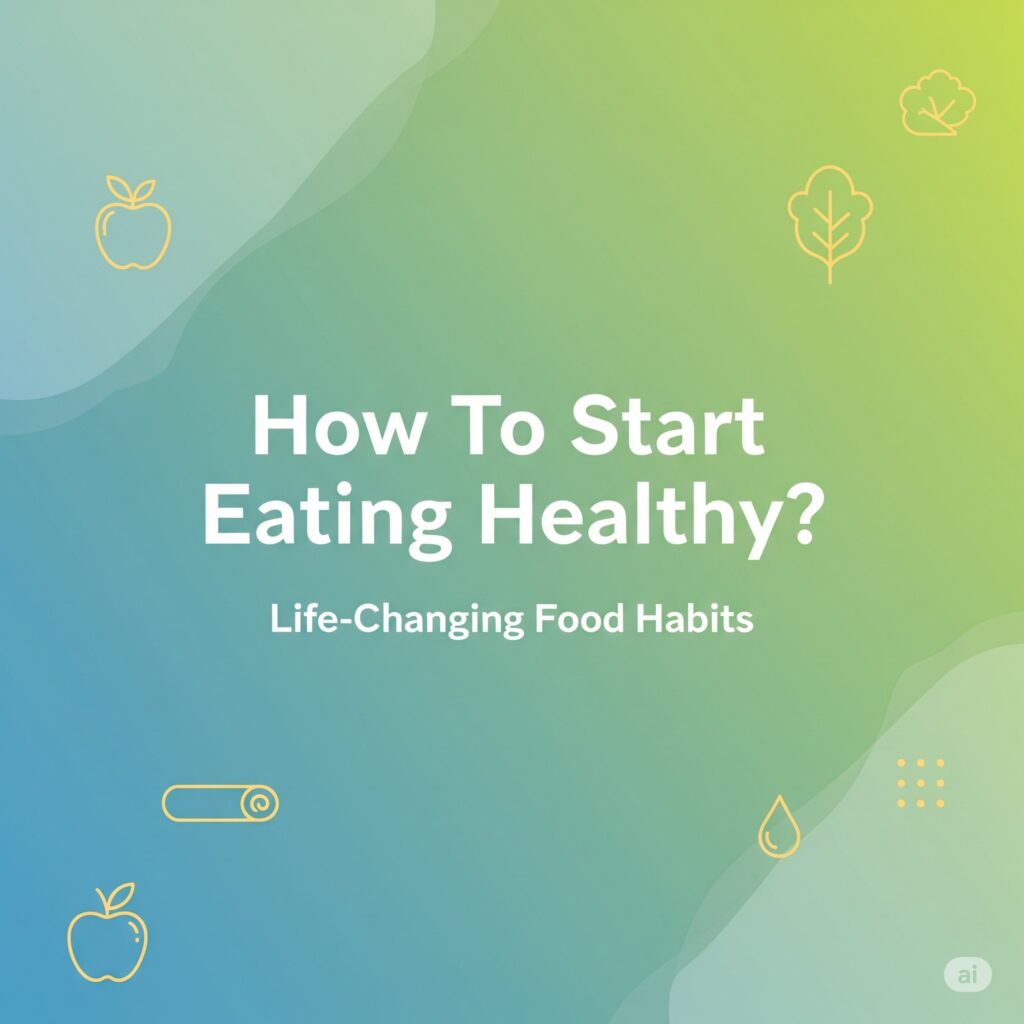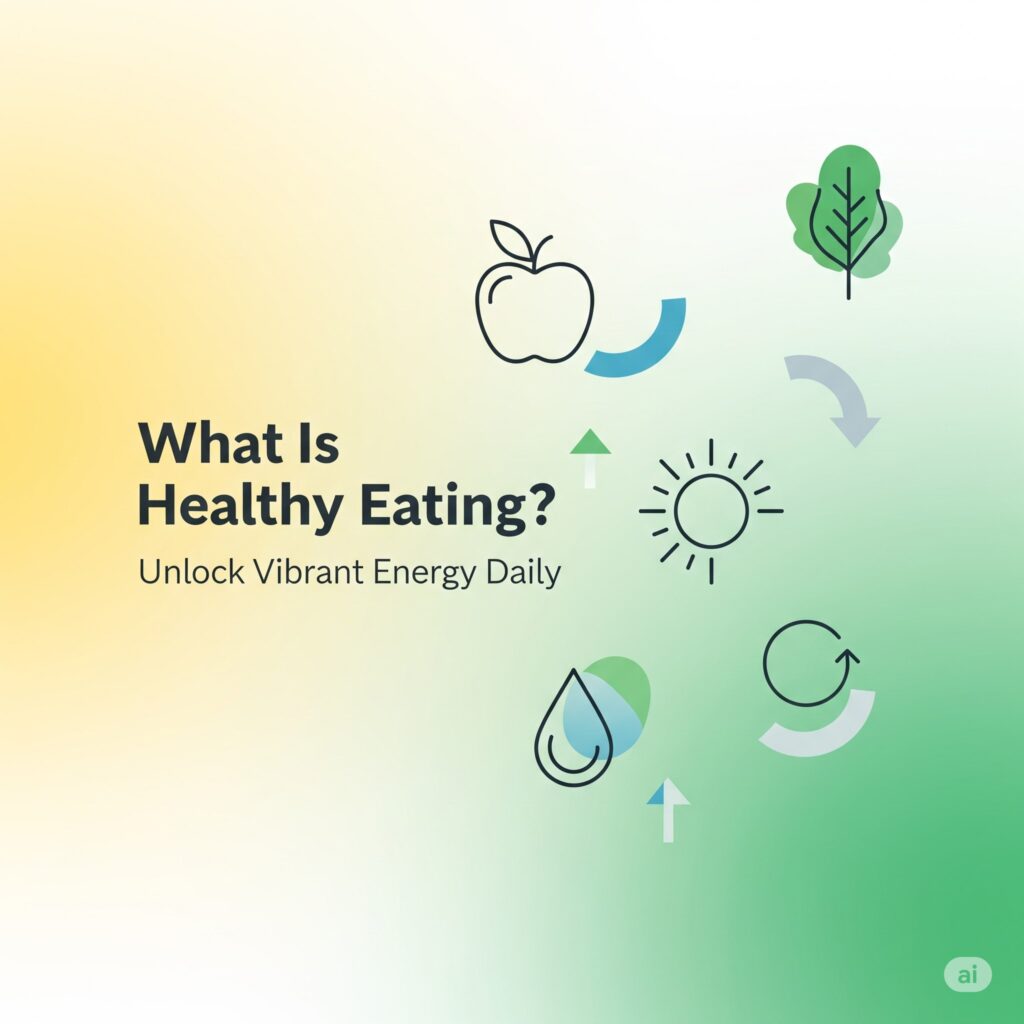Not sure what’s really in your snacks? Learn how to read food labels for healthy eating and make smarter, healthier choices every time you shop.
Ever grabbed a snack thinking it was healthy—only to find out later it’s full of sugar or sodium? You’re not alone. Many food packages look healthy on the outside, but the real truth is on the label. That’s why it’s so important to know how to read food labels for healthy eating.
Food labels aren’t just tiny text and numbers. They tell you what’s really inside your food—like calories, fats, added sugars, and more. Understanding them helps you make better choices and avoid unhealthy surprises. Whether you’re trying to eat clean, cut down on junk, or just be more mindful, learning how to read food labels for healthy eating is a simple way to take control.
From tricky terms to serving sizes that don’t match what we eat, food labels can be confusing at first. But once you learn how to read food labels for healthy eating, it gets easier to spot what’s good for you—and what’s not. Let’s break it down step by step so you can start making smarter food choices every day.
Table of contents
- How to read food labels for healthy eating and spot hidden sugars?
- How to read food labels for healthy eating using daily value %?
- How to read food labels for healthy eating by tracking macros?
- How to read food labels for healthy eating with smart AI tools?
- How to read food labels for healthy eating: what does organic mean?
- How to read food labels for healthy eating: is natural really better?
- How to read food labels for healthy eating: are you checking portion size?
- How to read food labels for healthy eating: which ingredients should you skip?
- How to read food labels for healthy eating: low vs no sodium
- How to read food labels for healthy eating: serving size vs portion size?
- FAQs: How to read food labels for healthy eating?
- Conclusion
How to read food labels for healthy eating and spot hidden sugars?
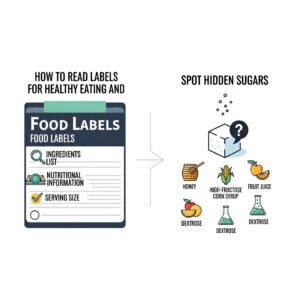
Watch out for sneaky sweeteners in your snacks. Sugar hides in more foods than you think—especially in snacks, drinks, and even sauces. When you want to eat healthier, knowing how to read food labels for healthy eating? is key to spotting these hidden sugars before they sneak into your diet.
Look past the word “sugar”
Companies often use different names for sugar to make products seem healthier. Some labels don’t just say “sugar.” Instead, they say things like high fructose corn syrup, dextrose, cane juice, or maltose. These are still sugars, even if they sound harmless. A food can have five types of sugar and still look okay at first glance. But once you know how to read food labels for healthy eating?, you’ll spot them quickly.
Check the added sugars line
Since 2021, most labels now show “Added Sugars” under the total sugars section. That’s the part you really want to focus on. Added sugars are the extra sweet stuff put in during processing—not the natural sugars found in fruits or milk. When you learn how to read food labels for healthy eating?, always check this part to see how much sugar was added just for taste.
Watch the serving size trick
Sometimes, a food item looks like it has just a little sugar. But when you look closer, that’s just for one serving—and the package has two or more. So if you drink the whole bottle or eat the full snack, you’re getting double or triple the sugar you thought. That’s why learning how to read food labels for healthy eating? helps you stay alert and avoid overeating hidden sugars.
Hidden sugars can make even “healthy-looking” foods a trap. With a little practice, spotting them gets easier—and you’ll be making smarter choices every time you shop.
How to read food labels for healthy eating using daily value %?
Understand what those percentages really mean. You’ve probably seen the % Daily Value on food labels. But what does it really tell you? If you’re learning how to read food labels for healthy eating?, this is one number you don’t want to ignore. It helps you see if a food is high or low in a certain nutrient.
Use the 5–20 rule to make quick choices
Here’s a simple trick: if a nutrient is 5% or less, it’s considered low. If it’s 20% or more, it’s high. So, for things like fiber or calcium, you want the number to be close to 20%. But for added sugars, sodium, or saturated fats, aim for 5% or lower.
Understanding this rule makes how to read food labels for healthy eating? way easier, especially when you’re in a rush at the store. It gives you a quick way to decide if a product is worth buying or not.
Compare different products
When you’re picking between two snacks or drinks, check the % Daily Value side by side. You might be surprised which one is healthier. One granola bar may have 25% of your daily added sugar in just one serving—way too much. Another might offer more fiber or iron. Knowing how to read food labels for healthy eating? helps you pick the better option without guessing.
Keep your whole day in mind
The % Daily Value is based on an average 2,000-calorie diet. You may eat more or less than that, depending on your lifestyle. Still, these percentages give you a solid idea of how one food fits into your whole day. Once you get used to it, you’ll see how how to read food labels for healthy eating? helps you balance your meals better.
Learning to use daily value % is like unlocking a secret code on your food. It makes healthy choices easier and smarter.
How to read food labels for healthy eating by tracking macros?
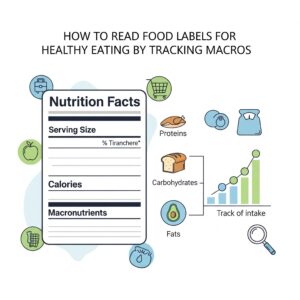
Break down your food into protein, carbs, and fat. If you want to eat smarter, tracking macros is a great place to start. Macros—short for macronutrients—are the main nutrients your body uses: protein, carbs, and fat. When learning how to read food labels for healthy eating?, understanding macros helps you balance your meals better.
Find the macros on the label
Every food label lists the grams of protein, total carbohydrates, and total fat. These are your macros. You’ll also see fiber and sugar under the carbs section and sometimes saturated fat under total fat. If you’re wondering how to read food labels for healthy eating?, this part tells you exactly what kind of fuel you’re putting into your body.
Match macros to your health goals
Your ideal macro balance depends on your goals. Want to build muscle? You’ll need more protein. Trying to lose weight? You might want to lower your carbs or fats. When you know how to read food labels for healthy eating?, you can check if a snack supports your goal—or if it’s just empty calories.
Avoid unbalanced choices How to read food labels for healthy eating?
Some foods seem healthy but are super high in just one macro, like fat or sugar. For example, a granola bar might have lots of carbs but barely any protein. That means it may not keep you full for long. By knowing how to read food labels for healthy eating?, you’ll catch these unbalanced options before they throw off your day.
Tracking macros isn’t just for athletes—it’s helpful for anyone trying to feel better and eat cleaner. Once you get the hang of it, reading labels becomes a quick habit.
How to read food labels for healthy eating with smart AI tools?
Let tech help you make better food choices. Reading labels can feel confusing, especially with all the tiny print and tricky ingredients. That’s where AI tools come in. If you’re wondering how to read food labels for healthy eating?, smart apps and scanners can make things way easier and faster.
Use AI label scanners to decode ingredients
AI-powered apps like Yuka, Fooducate, or MyFitnessPal can scan a food label and instantly break down what’s healthy and what’s not. Just point your phone at the barcode, and the app will tell you about the ingredients, nutrition facts, and even suggest better alternatives. If you’re new to how to read food labels for healthy eating?, this tech saves time and removes the guesswork.
Track what you eat automatically
Many AI tools don’t just scan—they also track your daily intake. These apps calculate your macros, vitamins, sugar, and even help you stay within your goals. Instead of writing everything down, you get an automatic log. This makes how to read food labels for healthy eating? feel more like a smart habit than a boring task.
Make smart choices at the store
You don’t have to be a nutrition expert to shop wisely. AI tools highlight red flags—like too much sodium or added sugar—before you even put the item in your cart. So even if you’re short on time, you can still pick what’s best for you. Knowing how to read food labels for healthy eating? gets way simpler when AI has your back.
With the help of smart tools, you can eat better, feel better, and still keep things quick and easy.
How to read food labels for healthy eating and avoid bad ingredients
How to read food labels for healthy eating: what does organic mean?
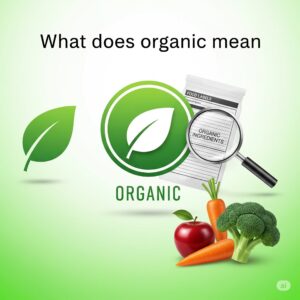
Not everything labeled “organic” is what it seems. You’ve probably seen the word organic on snacks, juices, and even frozen meals. But what does it really mean? If you’re learning how to read food labels for healthy eating?, understanding the “organic” label is important for making smart, honest choices.
Know what organic actually means
When a food is labeled organic, it usually means it was grown or made without harmful pesticides, synthetic fertilizers, or GMOs. For animal products, it also means no antibiotics or growth hormones. But here’s the thing—just because it says “organic” doesn’t mean it’s super healthy. That’s why it’s key to know how to read food labels for healthy eating? and not just grab something because the label looks green and clean.
Look for the certified organic seal How to read food labels for healthy eating?
In many countries, like the U.S., truly organic products have a government-approved seal, like the USDA Organic label. This means at least 95% of the ingredients are organic. If you don’t see a seal, the product might only have one or two organic ingredients. Knowing how to read food labels for healthy eating? helps you tell the difference and avoid falling for tricky packaging.
Watch out for processed organic foods
Yep, even cookies, chips, and candy can be labeled organic. That doesn’t mean they’re good for your body. Some organic snacks still have lots of sugar, salt, or unhealthy fats. So when you want to eat clean, don’t just trust the label—read the full ingredient list. That’s a big part of how to read food labels for healthy eating? and choosing foods that truly match your health goals.
Understanding what “organic” really means helps you shop smarter and avoid greenwashing. Labels can look good, but knowing the facts makes all the difference.
How to read food labels for healthy eating: is natural really better?
The word “natural” isn’t always what it seems. When you see the word natural on a label, it feels safe—like the food must be healthier. But that’s not always true. If you’re trying to learn how to read food labels for healthy eating?, it’s important to know what “natural” really means—and what it doesn’t.
“Natural” doesn’t mean unprocessed
Many products say natural even though they’re processed or contain added sugars, oils, or preservatives. There’s no strict rule for what natural has to include. That’s why, if you care about your health, learning how to read food labels for healthy eating? helps you look beyond buzzwords and check the actual ingredients.
Check the full ingredients list
Instead of just trusting the word natural, flip the package and read what’s inside. A truly natural product should have simple ingredients you recognize—like oats, apples, or almonds. But if you see things like “natural flavors,” corn syrup, or hydrogenated oils, the food might not be as healthy as it sounds. This is where how to read food labels for healthy eating? really comes in handy.
Focus on the full picture
The word natural may be just a marketing trick. Don’t choose food based only on that label. Look at the nutrition facts, check for added sugars or saturated fats, and compare it with other options. Knowing how to read food labels for healthy eating? gives you the power to choose what’s actually better for your body.
So, is natural always better? Not really. But when you understand what’s behind the label, you can make choices that truly support your health and energy.
How to read food labels for healthy eating: are you checking portion size?
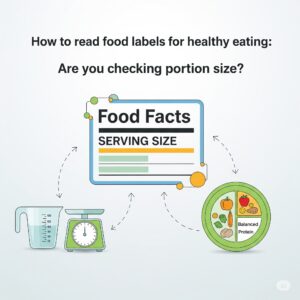
One pack doesn’t always mean one serving. Here’s something tricky—most people think one snack bag or drink equals one serving. But that’s not always true. If you’re figuring out how to read food labels for healthy eating?, checking the portion size is a big deal.
One item can have multiple servings
Let’s say you grab a small bag of chips or a bottle of juice. The front may look like it’s made for one person. But when you look at the label, it might say 2 servings per container. That means if you eat or drink the whole thing, you’re actually getting double the calories, sugar, fat—everything. That’s why how to read food labels for healthy eating? means more than just glancing at numbers.
Always start with the serving size
Before checking anything else, look at the serving size listed at the top of the nutrition label. This tells you how much the nutrition info is actually talking about. If it says one serving is half a cup, but you eat a whole cup, you need to double the numbers. Learning how to read food labels for healthy eating? helps you avoid underestimating what you’re really eating.
Choose snacks with realistic serving sizes
Some healthy snacks have better portion sizes than others. For example, one protein bar might be 1 serving, while another is 2 servings in one bar. That’s confusing, right? Knowing how to read food labels for healthy eating? helps you pick foods that match your appetite and your health goals.
Portion size may seem like a small thing, but it can totally change how healthy a food actually is. Once you start paying attention, you’ll feel more in control of what goes into your body.
How to read food labels for healthy eating: which ingredients should you skip?
Some ingredients just aren’t worth it. Not all foods are as healthy as they seem. The front of the package might say “low fat” or “natural,” but the ingredient list tells the real story. When you’re learning how to read food labels for healthy eating?, knowing which ingredients to skip makes a big difference in your choices.
Watch out for added sugars and syrups
Sugar hides under many names. High fructose corn syrup, cane sugar, maltose, and glucose are all just different forms of added sugar. They might make food taste better, but they can lead to crashes, cravings, and even long-term health issues. If you’re serious about how to read food labels for healthy eating?, avoiding these sneaky sweeteners should be one of your top habits.
Skip artificial additives and colorings How to read food labels for healthy eating?
If you see names like Red 40, Yellow 5, or BHT, you’re looking at artificial colors and preservatives. These don’t add any nutritional value and may affect your focus, mood, or even digestion. Learning how to read food labels for healthy eating? means spotting these chemicals early and choosing cleaner, simpler options.
Limit hydrogenated oils and trans fats
These are often found in packaged baked goods and snacks. Even small amounts can be harmful to your heart. If the label lists “partially hydrogenated oil,” that’s your cue to put it back. Understanding how to read food labels for healthy eating? helps you steer clear of these harmful fats and stick with healthier ones like olive or avocado oil.
Knowing which ingredients to skip is like having a filter—it helps you block the bad stuff and choose foods that fuel your body right. Once you know what to avoid, shopping healthy becomes way easier.
How to read food labels for healthy eating: low vs no sodium
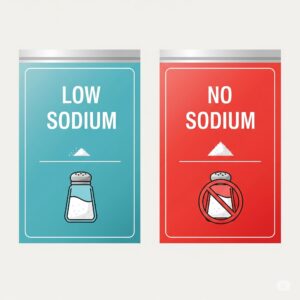
They’re not the same—and that matters. When it comes to salt, small differences in labels can mean big changes in your health. If you’re trying to cut back on sodium, knowing the difference between “low sodium” and “no sodium” is super helpful. It’s a key part of learning how to read food labels for healthy eating? the right way.
What does low sodium really mean?
A food labeled low sodium has 140 mg of sodium or less per serving. That might still sound like a little, but if you eat more than one serving—or add other salty foods—it can add up quickly. So, when you’re working on how to read food labels for healthy eating?, checking this number helps you stay in control of your daily salt intake.
What about no sodium or sodium-free?
If a label says no sodium or sodium-free, it has less than 5 mg of sodium per serving. That’s super low. It’s the better option if you’re watching your blood pressure or just want to stay on the cleaner side of your diet. One of the most important steps in how to read food labels for healthy eating? is knowing that these tiny numbers make a real difference.
Don’t forget the serving size
A food may seem low in sodium, but if the serving size is small, you might be eating more than you think. Always check how many servings are in the package. If you eat double the portion, you’re also getting double the salt. That’s why portion size plays a big role in how to read food labels for healthy eating?, especially when it comes to sodium.
Being smart about sodium isn’t just about avoiding salty snacks—it’s about reading between the lines and choosing foods that help your body feel its best.
How to read food labels for healthy eating: serving size vs portion size?
These two terms sound similar—but they aren’t the same. When you’re trying to eat better, serving size and portion size can be confusing. They both deal with how much food you eat, but they mean different things. If you’re learning how to read food labels for healthy eating?, understanding this difference is super important.
What is a serving size?
A serving size is the amount of food listed on the nutrition label. It’s set by the manufacturer or based on common guidelines. All the numbers—calories, sugar, fat, and more—are based on this amount. So when you read the label, remember: it’s not for the whole package, just for one serving. This is why knowing how to read food labels for healthy eating? starts with spotting the serving size right at the top.
What is a portion size?
A portion size is how much you actually eat. It could be more or less than the serving size. For example, the label might say 1 cup of cereal is a serving, but if you pour 2 cups, your portion is double. That means you also double the calories, sugar, and sodium. When figuring out how to read food labels for healthy eating?, this step helps you avoid underestimating what you’re really eating.
Why the difference matters?
Many people make healthy food choices but still overeat without realizing it. That’s because the portion they eat is bigger than the serving size listed. Understanding how to read food labels for healthy eating? helps you stay in control—so you can enjoy your food and still stick to your goals.
Serving size tells you what’s on the label. Portion size tells you what’s on your plate. Learning the difference helps you eat smarter every day.
FAQs: How to read food labels for healthy eating?
Why is it important to read food labels?
Food labels tell you what’s really in your food. They show calories, sugar, fat, and more. If you’re wondering how to read food labels for healthy eating?, start by checking the label every time you shop. It helps you avoid foods that look healthy but aren’t.
What’s the first thing I should check on a food label?
Always check the serving size first. It tells you how much the nutrition info is based on. If you eat more than the serving size, you’re eating more of everything—calories, sugar, and fat. This step is key when learning how to read food labels for healthy eating?
Are “healthy” words on packages always true?
Not always. Words like natural, low fat, or organic can be misleading. Some products use these to seem healthy, but the ingredients tell the truth. Knowing how to read food labels for healthy eating? helps you look past marketing tricks and find the facts.
How can I tell if a food has too much sugar?
Look at the added sugars section on the label. If a product has over 10 grams of added sugar per serving, that’s a lot. Also, check the ingredients for words like corn syrup or cane sugar. These clues are part of how to read food labels for healthy eating? and spotting hidden sugar.
What are some ingredients I should avoid?
Avoid ingredients like trans fats, high fructose corn syrup, artificial colors, and anything with long, hard-to-pronounce names. These don’t give your body anything good. Reading labels closely helps you skip these harmful extras.
Can food label apps help me eat better?
Yes! Apps with AI can scan barcodes and tell you if the food is healthy. They break down nutrition facts in seconds. If you’re just starting to learn how to read food labels for healthy eating?, these tools can make it super easy.
Conclusion
Learning how to read food labels for healthy eating doesn’t have to be hard. Once you know what to look for, it gets easier every time you shop. Start by checking the serving size. Then, look at sugar, sodium, and ingredients. These small steps can help you make smarter choices.
When you understand how to read food labels for healthy eating, you can avoid hidden sugars and unhealthy fats. You’ll know exactly what you’re putting in your body.
So next time you grab a snack, pause and check the label. It’s a small habit that can make a big difference. Remember how to read food labels for healthy eating? is a skill worth building—for your health and your future.

